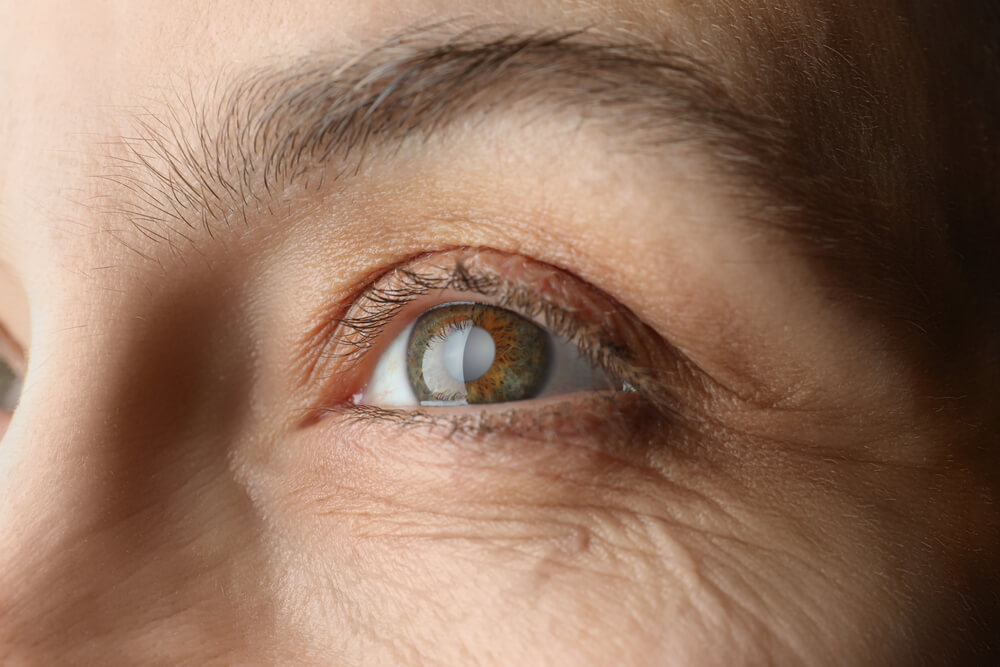How Do Cataracts Affect Vision?
October 2, 2023
Vision is an incredibly important part of life. Eyesight helps you navigate the world and enjoy all kinds of unique experiences.
That's why it is so important to protect yourself against eye conditions that can damage your vision. Cataracts are one of the most common vision problems.
This is because they are unavoidable. While they typically develop in older individuals, everyone will experience cataracts at some point.
Keep reading to learn more about cataracts, including how they affect vision!
What Are Cataracts?

Cataracts are a clouding that develops in the lens of the eye. The lens is located behind the iris and pupil and is responsible for bending and focusing light that enters the eye onto the retina.
This allows for clear, sharp vision. The lens is normally transparent, but with cataracts, areas of cloudiness and opacities develop in the lens that obstruct and block light.
Cataracts form from changes to the proteins that make up the lens structure. As you age, the proteins in the lens begin to break down and clump together.
This causes the lens to become progressively cloudy and discolored. Additional factors like smoking, UV light exposure, diabetes, and certain medications can accelerate protein changes in the lens, leading to cataracts forming at an earlier age.
In the early stages, small protein clumps scatter some light, but the vision remains relatively clear. Over time, the cataract grows larger and denser, blocking light from properly focusing on the retina.
The cloudier the lens, the more blurry, dim, and obscured vision becomes.
Do You Think You May be Suffering From Cataracts?
Schedule a Cataract Consultation
What Are the Symptoms of Cataracts?
Cataracts develop gradually, often going undetected in their earliest stages. At first, vision may remain relatively clear with minimal impact on daily life.
However, over time, cataracts progress, clouding more of the lens and obstructing light that enters the eye. Eventually, vision changes become significant enough that symptoms are apparent.
Being aware of common cataract symptoms helps identify early development before vision loss severely impacts activities.
 Cloudy, Blurry Vision
Cloudy, Blurry Vision
One of the first and most common symptoms of cataracts is increasing cloudy, blurry vision. Objects look indistinct and unfocused, especially in low-light situations like driving at night.
Vision seems to fluctuate throughout the day between clear and blurry moments as the cataracts obstruct light intermittently. Cloudy vision starts in one eye but eventually affects both as the cataracts worsen.
Increasing the brightness of lights can temporarily help you see better as more light enters the eye.
Fading of Colors
Colors often start to look more faded or yellowed as cataracts change the color of your lens. This loss of contrast sensitivity reduces color vibrancy and richness.
Increased Sensitivity to Glare
With cataracts, there is greater sensitivity to glare as light scatters within the eye. Bright sunlight, lamps, reflective surfaces, and headlights at night can cause significant glare discomfort.
The light that was once easy to handle now seems intensely bright and painful. Some also experience starburst effects and halos emanating from light sources.
Double Vision
Some cataract sufferers occasionally notice double vision or a “ghost” image in the affected eye as light focuses abnormally on the retina. This doubling effect may come and go as the eye struggles to compensate for the growing cataract’s impact.
Find Out If You're a Candidate For Cataract Surgery
How Are Cataracts Treated?
Cataract surgery is the only way to restore vision lost from cataracts. The cloudy natural lens must be removed and replaced with an artificial intraocular lens (IOL) implant.

During cataract surgery, an incision is made in the cornea to access the lens. The cataract surgeon first uses ultrasound waves to break up and remove the cataract-affected lens.
Once the natural lens is removed, the plastic IOL is inserted in its place. Cataract surgery today is considered extremely safe and effective.
Advancements in the procedure mean it can be done on an outpatient basis with little recovery time needed afterward. Prior to the procedure, you will get to choose your IOL implant type.
Options include basic mono-focal IOLs with a single focus strength or advanced multifocal IOLs that allow some degree of vision at various distances. The type selected depends on factors like lifestyle, eye health, and cost.
What Happens During Cataract Surgery?
During the procedure, anesthesia drops numb the eye so you are comfortable. The cataract surgeon will create a small opening in the cornea near the outer edge.
Through this opening, the cataract surgeon will gently break up the lens into tiny pieces and suction them out. Next, they will insert the new IOL and position it in place.
Afterward, the tiny opening in the cornea is left alone to heal as it will naturally close. Stitches are rarely needed.
With the cloudy lens gone and clear IOL implanted, vision can be restored.
Will My Vision Be Restored After Cataract Surgery?
Cataract surgery has an astonishingly high rate of success. While no surgical results are ever a guarantee, cataract surgery is known to be highly reliable.
Your visual range after cataract surgery will mostly depend on what IOL you chose. Standard IOLs guarantee that you will need glasses after the procedure.
Premium IOLs can reduce your dependence on glasses after cataract surgery. Your eye doctor at Carroll Vision Center will help you determine which lens is best for you.
Do you want to learn more about cataract surgery or if you may be experiencing cataracts? Schedule a cataract evaluation at Carroll Vision Center in Westminster, MD, today!



